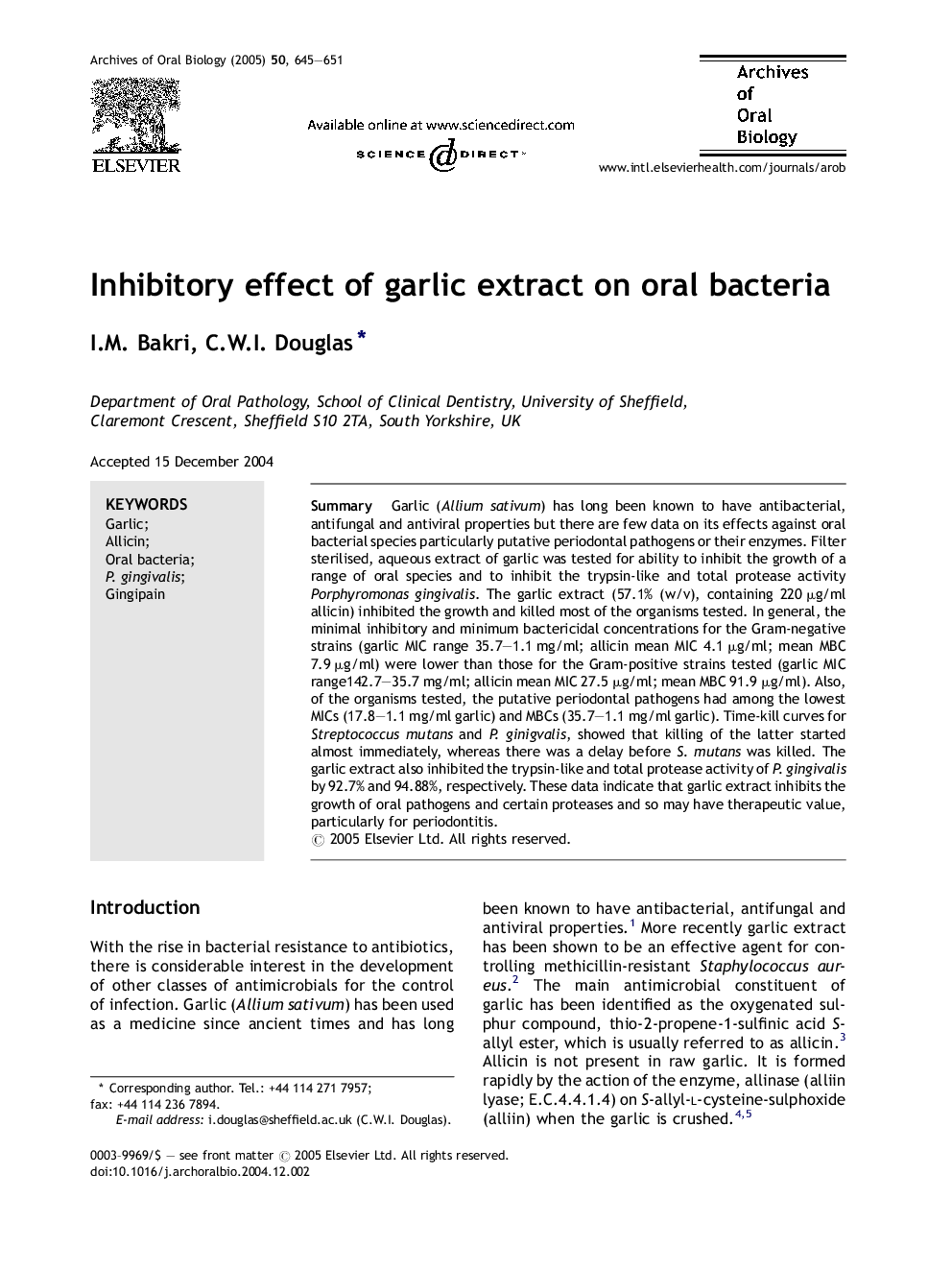| Article ID | Journal | Published Year | Pages | File Type |
|---|---|---|---|---|
| 9996674 | Archives of Oral Biology | 2005 | 7 Pages |
Abstract
Garlic (Allium sativum) has long been known to have antibacterial, antifungal and antiviral properties but there are few data on its effects against oral bacterial species particularly putative periodontal pathogens or their enzymes. Filter sterilised, aqueous extract of garlic was tested for ability to inhibit the growth of a range of oral species and to inhibit the trypsin-like and total protease activity Porphyromonas gingivalis. The garlic extract (57.1% (w/v), containing 220 μg/ml allicin) inhibited the growth and killed most of the organisms tested. In general, the minimal inhibitory and minimum bactericidal concentrations for the Gram-negative strains (garlic MIC range 35.7-1.1 mg/ml; allicin mean MIC 4.1 μg/ml; mean MBC 7.9 μg/ml) were lower than those for the Gram-positive strains tested (garlic MIC range142.7-35.7 mg/ml; allicin mean MIC 27.5 μg/ml; mean MBC 91.9 μg/ml). Also, of the organisms tested, the putative periodontal pathogens had among the lowest MICs (17.8-1.1 mg/ml garlic) and MBCs (35.7-1.1 mg/ml garlic). Time-kill curves for Streptococcus mutans and P. ginigvalis, showed that killing of the latter started almost immediately, whereas there was a delay before S. mutans was killed. The garlic extract also inhibited the trypsin-like and total protease activity of P. gingivalis by 92.7% and 94.88%, respectively. These data indicate that garlic extract inhibits the growth of oral pathogens and certain proteases and so may have therapeutic value, particularly for periodontitis.
Related Topics
Health Sciences
Medicine and Dentistry
Dentistry, Oral Surgery and Medicine
Authors
I.M. Bakri, C.W.I. Douglas,
